
Discover the Enchanting Świętokrzyskie Mountains
Explore the Świętokrzyskie Mountains: Poland's ancient mountain range offering a blend of natural beauty, rich history, and captivating folklore.
The Świętokrzyskie Mountains, also known as the Holy Cross Mountains, are one of the oldest mountain ranges in Europe. Located in central Poland, this region is rich in history, legends, and natural beauty. The mountains are named after the Holy Cross relics, said to be housed in the Benedictine monastery on Łysa Góra, one of the highest peaks. This blend of natural splendor and cultural heritage makes the Świętokrzyskie Mountains a unique destination for travelers. The range is ideal for hiking enthusiasts, offering numerous trails that cater to all levels of experience. The Świętokrzyski National Park, established in 1950, protects the most valuable and picturesque areas of the mountains. Here, you will find dense forests, serene valleys, and diverse wildlife. The park is also home to the famous Gołoborze, vast fields of quartzite rock fragments, providing a striking and otherworldly landscape. Apart from natural attractions, the Świętokrzyskie Mountains are steeped in folklore and history. The region is dotted with ancient castles, charming villages, and historic sites. Notable landmarks include the ruins of Krzyżtopór Castle and the picturesque town of Sandomierz, with its well-preserved medieval architecture. This area is also known for its traditional crafts and local cuisine, offering a rich cultural experience for visitors.
Local tips in Świętokrzyskie Mountains
- Visit the Benedictine Monastery on Łysa Góra for stunning views and a peek into the region's spiritual history.
- Hike the popular Łysica trail, the highest peak in the range, suitable for beginners and offering panoramic views.
- Plan your trip in late spring or early autumn for the best weather and fewer crowds.
- Wear sturdy hiking boots, as some trails can be rocky and uneven.
- Try local dishes like 'zalewajka' soup and 'kielbasa' to get a taste of regional cuisine.
Discover the Enchanting Świętokrzyskie Mountains
The Świętokrzyskie Mountains, also known as the Holy Cross Mountains, are one of the oldest mountain ranges in Europe. Located in central Poland, this region is rich in history, legends, and natural beauty. The mountains are named after the Holy Cross relics, said to be housed in the Benedictine monastery on Łysa Góra, one of the highest peaks. This blend of natural splendor and cultural heritage makes the Świętokrzyskie Mountains a unique destination for travelers. The range is ideal for hiking enthusiasts, offering numerous trails that cater to all levels of experience. The Świętokrzyski National Park, established in 1950, protects the most valuable and picturesque areas of the mountains. Here, you will find dense forests, serene valleys, and diverse wildlife. The park is also home to the famous Gołoborze, vast fields of quartzite rock fragments, providing a striking and otherworldly landscape. Apart from natural attractions, the Świętokrzyskie Mountains are steeped in folklore and history. The region is dotted with ancient castles, charming villages, and historic sites. Notable landmarks include the ruins of Krzyżtopór Castle and the picturesque town of Sandomierz, with its well-preserved medieval architecture. This area is also known for its traditional crafts and local cuisine, offering a rich cultural experience for visitors.
When is the best time to go to Świętokrzyskie Mountains?
Iconic landmarks you can’t miss
Krzyżtopór Castle
Explore Krzyżtopór Castle, a magnificent 17th-century fortress in Poland, rich in history, architecture, and breathtaking views.

Kadzielnia Nature Reserve
Explore Kadzielnia Nature Reserve in Kielce, Poland – a haven for nature lovers with stunning landscapes, hiking trails, and rich geological history.

Sabat Krajno PARK Rozrywki i Miniatur
Explore the enchanting Sabat Krajno PARK Rozrywki i Miniatur, where thrilling rides and stunning miniatures of world-famous landmarks await.

Museum of the Kielce Countryside
Explore the Museum of the Kielce Countryside and uncover the rich tapestry of Polish rural life and traditions in a stunning natural setting.

Jaskinia Raj
Discover the stunning beauty of Jaskinia Raj, Poland's most captivating cave, featuring breathtaking rock formations and rich geological history.

Krzemionki
Uncover the ancient flint mines and breathtaking natural beauty of Krzemionki, a unique archaeological site in Poland.

Henryk Sienkiewicz Museum
Explore the life and legacy of Nobel laureate Henryk Sienkiewicz at his dedicated museum in Oblęgorek, Poland, rich with history and literary treasures.

The National Museum in Kielce
Explore heritage and artistry at the National Museum in Kielce, Poland, featuring rich collections and engaging exhibitions for all ages.

Swietokrzyski National Park
Discover the enchanting landscapes and rich biodiversity of Swietokrzyski National Park, a paradise for adventurers and nature lovers in Poland.

Łysica
Discover the breathtaking beauty of Łysica, Poland's highest peak, with panoramic views and diverse wildlife for an unforgettable outdoor adventure.

Łysa Góra
Discover the breathtaking beauty and rich history of Łysa Góra, a stunning mountain peak in Poland perfect for adventure seekers and tranquil getaways.

Góra Miedzianka
Discover the breathtaking beauty of Góra Miedzianka, a nature preserve in Poland known for its stunning landscapes and diverse wildlife.

Kompleks Świętokrzyska Polana
Discover the perfect blend of adventure and relaxation at Kompleks Świętokrzyska Polana, a must-visit tourist attraction in Poland.

Boar Monument
Explore the Boar Monument in Kielce, a stunning symbol of local culture and craftsmanship, perfect for capturing unforgettable memories.
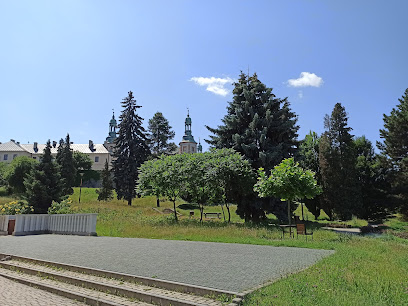
Rezerwat Wykus
Discover the serene beauty of Rezerwat Wykus, a peaceful nature preserve in Poland, ideal for hiking, wildlife watching, and family picnics.

Unmissable attractions to see
Sabat Krajno PARK Rozrywki i Miniatur
Experience the magic of miniatures and thrilling rides at Sabat Krajno PARK, a must-visit family-friendly amusement park in Poland.
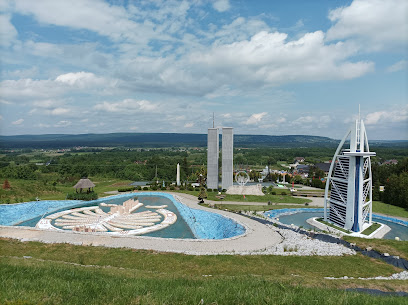
Łysica
Explore the breathtaking landscapes and rich biodiversity of Łysica in the heart of the Świętokrzyskie Mountains, Poland's natural gem.
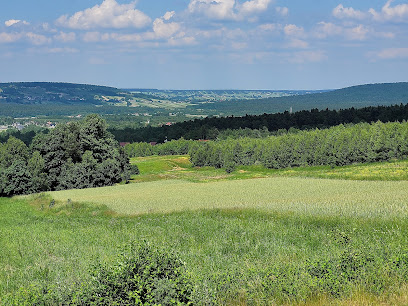
Osada Średniowieczna w Hucie Szklanej pod Świętym Krzyżem
Explore the rich history of the Middle Ages at the Medieval Settlement in Huta Szklana, where history comes alive in an interactive outdoor museum.

Swietokrzyski National Park
Discover the breathtaking landscapes and rich biodiversity of Swietokrzyski National Park, a must-visit destination for nature lovers in Poland.
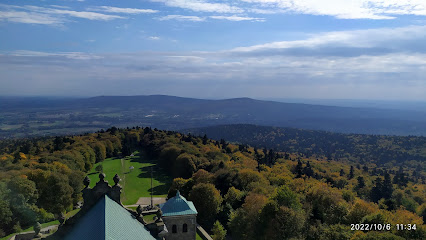
Kompleks Świętokrzyska Polana
Experience a family-friendly paradise at Świętokrzyska Polana in Chrusty, Poland, where amusement rides, cozy accommodations, and dining delights await.

Skała Agaty
Explore Skała Agaty in Kielce, Poland – a breathtaking natural rock formation perfect for hiking, picnics, and immersing in the beauty of nature.

Rezerwat Wykus
Experience the tranquility of Rezerwat Wykus, a stunning nature preserve in Poland, perfect for outdoor enthusiasts and nature lovers.

Barcza Nature Reserve
Discover the enchanting landscapes and diverse wildlife at Barcza Nature Reserve, a peaceful retreat in the heart of Poland's natural wonders.

Gołoborze na Łysicy
Explore the breathtaking views and rich history of Gołoborze na Łysicy, a must-visit tourist attraction in Poland's Bodzentyn region.

Rezerwat przyrody Kamień Michniowski
Experience the serene beauty and rich biodiversity of Kamień Michniowski Nature Reserve, a must-visit destination for nature lovers in Poland.

Diabelski Kamień
Discover the enchanting beauty of Diabelski Kamień, a breathtaking nature preserve in Poland renowned for its stunning rock formations and rich biodiversity.

Dymarki Świętokrzyskie
Explore Dymarki Świętokrzyskie: A captivating blend of ancient history and stunning natural beauty in the heart of Poland's Świętokrzyskie Mountains.

Źródło św. Franciszka
Discover the serene beauty and spiritual significance of the Shrine of Święta Katarzyna, a must-visit attraction in Poland's enchanting countryside.

Początek Ścieżki przyrodniczej „Huta Szklana – Święty Krzyż”
Explore Huta Szklana – Święty Krzyż: A Natural Haven in Świętokrzyski National Park, Perfect for Hiking and Nature Lovers.

Przyrodnicza ścieżka edukacyjna
Discover the beauty of nature at Przyrodnicza Ścieżka Edukacyjna in Bodzentyn, where education meets breathtaking landscapes.

Essential places to dine
Gospoda Echa Leśne
Discover authentic Polish cuisine at Gospoda Echa Leśne - where family-friendly dining meets rustic charm in Łączna.

Karczma Pod Strzechą
Experience authentic Polish cuisine at Karczma Pod Strzechą in Kielce - a culinary gem featuring traditional dishes like pierogi in a warm setting.
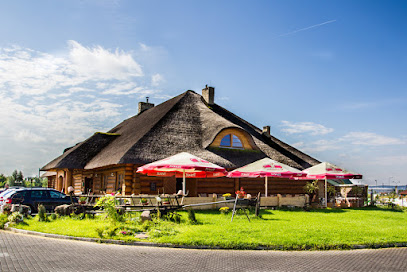
Karczma Mnicha
Discover the essence of Polish cuisine at Karczma Mnicha in Nowa Słupia - where tradition meets taste.

Restauracja U Kucharzy Kielce
Discover exceptional Polish and Italian cuisine at Restauracja U Kucharzy in Kielce - where every dish tells a story.

Hotel Uroczysko Spa & Wellness
Discover serenity and rejuvenation at Hotel Uroczysko Spa & Wellness in Poland’s lush pine forests—your perfect getaway awaits.

Smaczna Chatka w Świętej Katarzynie
Experience authentic Polish flavors at Smaczna Chatka in Święta Katarzyna - where tradition meets culinary excellence.

Żółty Słoń
Discover the art of fusion dining at Żółty Słoń in Kielce – where traditional Polish cuisine meets global flavors in an exquisite setting.

Restauracja PoRzeczka
Experience modern European cuisine at Restauracja PoRzeczka in Kielce – where tradition meets innovation in every dish.

Hotel Senator
Experience luxury and tranquility at Hotel Senator in Starachowice – your perfect retreat for dining, relaxation, and business.

Świętokrzyski Dwór Restauracja Hotel Wypoczynek Chrzciny Komunie Wesela Konferencje w Górach
Experience authentic Polish cuisine and serene accommodations at Świętokrzyski Dwór in picturesque Nowa Słupia.

Odyssey ClubHotel Wellness & SPA
Experience ultimate relaxation and gourmet dining at Odyssey ClubHotel Wellness & SPA in Kielce - where luxury meets tranquility.

Widnokrąg
Discover the perfect blend of art and cuisine at Widnokrąg in Sandomierz—where every meal is a masterpiece.

Restauracja Rockabilly Steakhouse and Whisky Bar
Experience the best of American cuisine at Rockabilly Steakhouse and Whisky Bar in Kielce - where delicious food meets vibrant rockabilly culture.

Hotel Ameliówka
Discover exquisite dining and relaxation at Hotel Ameliówka - where comfort meets culinary delight in Mąchocice Kapitulne.

Biały Kruk - Restauracja
Discover Biały Kruk: A charming restaurant and inn in Górno serving delicious Polish cuisine amidst serene surroundings.

Markets, malls and hidden boutiques
Galeria Echo
Explore Galeria Echo in Kielce - the ultimate shopping and leisure destination featuring a blend of stores, eateries, and entertainment for all ages.

Pasaż Świętokrzyski
Discover the vibrant Pasaż Świętokrzyski in Kielce - a premier shopping destination offering diverse stores, dining options, and entertainment experiences.
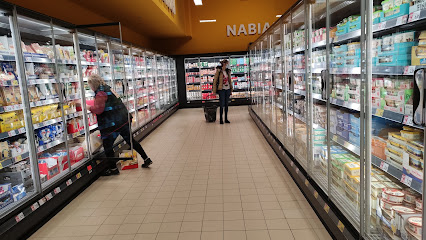
Museum of Minerals and Fossils
Discover the beauty of Earth's treasures at the Museum of Minerals and Fossils in Święta Katarzyna, Poland.

cud miód - autorskie lody i gofry
Discover the enchanting flavors of artisanal ice cream and waffles at Cud Miód, a sweet haven in Święta Katarzyna.

Delikatesy Centrum
Explore the rich flavors of Poland at Delikatesy Centrum, a top grocery store and deli in Bodzentyn offering local delicacies and international treats.

Lewiatan
Explore Lewiatan in Krajno-Parcele for a taste of local life, fresh produce, and delightful snacks during your travels in Poland.

Stokrotka
Discover the essence of Polish cuisine at Stokrotka, a local grocery store in Bodzentyn, offering fresh produce and traditional treats.

Prezentmarzeń
Discover unique gifts and local experiences at Prezentmarzeń in Kielce – your ultimate destination for souvenirs and event tickets.

CENTRO Sklep Przemyslowo-Motoryzacyjny
Discover a local shopping gem at CENTRO Sklep Przemyslowo-Motoryzacyjny in Daleszyce, where variety meets Polish culture.

Miss Poppy Cheap, Stylish and Convenient
Explore Miss Poppy in Bodzentyn, Poland – your destination for stylish, budget-friendly vintage clothing and sustainable fashion treasures.

Sklep Wielobranżowy Małgorzata Domańska
Experience the local charm at Sklep Wielobranżowy Małgorzata Domańska, a variety store in Wzdół-Kolonia with unique finds and friendly service.

Sklep wielobranżowy U Iwonki
Discover unique finds at U Iwonki, Bieliny's charming variety store, offering beauty supplies, clothing, and fashion accessories.

Spiżarnia Kaśki pod Łysicą
Experience the local flavors and wellness at Spiżarnia Kaśki pod Łysicą, a delightful grocery store and health food restaurant in Święta Katarzyna.

Galeria Rękodzieła
Explore the rich tapestry of Polish craftsmanship at Galeria Rękodzieła, where every handcrafted item tells a unique story.

Odido Delikatesy Świętokrzyskie u Kaśki
Explore local flavors at Odido Delikatesy Świętokrzyskie u Kaśki, a grocery store in Święta Katarzyna offering fresh, regional delicacies.

Essential bars & hidden hideouts
Shoemaker Irish Pub & Steakhouse | Restaurant
Discover the heart of Irish culture at Shoemaker Irish Pub & Steakhouse in Kielce, where delicious cuisine and a lively atmosphere await.

Bar Leśny
Discover the cozy charm of Bar Leśny in Złota Woda, where delightful cuisine meets serene natural beauty for an unforgettable experience.

Restauracja Garaż
Experience the vibrant flavors of American barbecue and lively entertainment at Restauracja Garaż in Kielce, the heart of culinary delight!

Restauracja Rockabilly Steakhouse and Whisky Bar
Experience the vibrant flavors of American cuisine at Kielce's Restauracja Rockabilly Steakhouse and Whisky Bar, where every bite is a celebration.

Craft Beer PUB
Discover the best of Kielce's craft beer scene at Craft Beer PUB, where artisanal brews meet a cozy atmosphere.

Klubokawiarnia Quest
Experience the vibrant fusion of coffee culture and nightlife at Klubokawiarnia Quest in Kielce, where every visit is a new adventure.
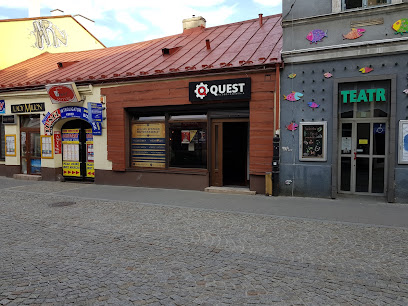
Zajazd Złota-Woda
Experience the charm and serenity of Zajazd Złota-Woda, a perfect blend of dining, relaxation, and local culture in the heart of Łagów.

Bar Ludwik
Experience the charm of Kielce at Bar Ludwik, where casual dining meets a vibrant bar atmosphere in an affordable setting.
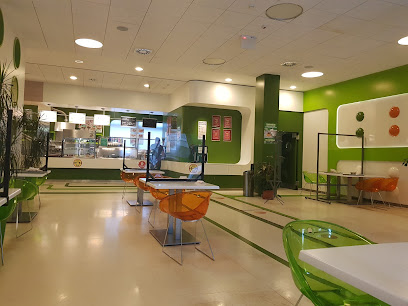
Rynek 11 Restaurant & Cocktail Bar
Experience the best of Kielce's culinary scene at Rynek 11 Restaurant & Cocktail Bar, where exceptional food meets vibrant nightlife.

Świeże Ryby z Mazur - Smażalnia Górno
Experience the flavors of Poland at Świeże Ryby z Mazur - Smażalnia Górno, where fresh fish and local delicacies await in a cozy setting.

Bar Planty
Discover the local flavors and vibrant atmosphere at Bar Planty, Kielce's charming self-service bar offering delicious Polish cuisine.

Panta Rhei Pub :: Klub Bilardowy
Discover vibrant nightlife and sports excitement at Panta Rhei Pub, Kielce's favorite sports bar for locals and tourists alike.

Crazy Pig Kielce - żeberka Kielce - restauracja - kuchnia amerykańska Kielce - jedzenie - piwo kraftowe
Experience the best of American cuisine in Kielce at Crazy Pig, serving mouthwatering ribs and craft beers in a lively atmosphere.

Bar Pstrąg Wilków
Experience the charm of Bar Pstrąg Wilków, a peaceful bar offering local flavors and a cozy atmosphere in the heart of nature.

Bar Danusia
Discover the relaxed charm of Bar Danusia, a cozy lounge in Górno offering local flavors and a welcoming atmosphere for tourists.

Local Phrases about Świętokrzyskie Mountains
-
- HelloCześć
[cheh-shch] - GoodbyeDo widzenia
[doh veed-zen-ya] - YesTak
[tahk] - NoNie
[nyeh] - Please/You're welcomeProszę
[pro-sheh] - Thank youDziękuję
[jen-koo-yeh] - Excuse me/SorryPrzepraszam
[pshay-prah-sham] - How are you?Jak się masz?
[yahk sheh mah-sh] - Fine. And you?Dobrze. A ty?
[doh-bzheh. ah ti?] - Do you speak English?Czy mówisz po angielsku?
[chi mo-veesh poh ahn-gyel-skoo?] - I don't understandNie rozumiem
[nyeh roh-zoo-myem]
- HelloCześć
-
- I'd like to see the menu, pleaseChciałbym zobaczyć menu, proszę
[h-chyahwb zoh-bah-chich meh-noo, pro-sheh] - I don't eat meatNie jem mięsa
[nyeh yem myen-sah] - Cheers!Na zdrowie!
[nah zdroh-vyeh] - I would like to pay, pleaseChciałbym zapłacić, proszę
[h-chyahwb zah-plah-chich, pro-sheh]
- I'd like to see the menu, pleaseChciałbym zobaczyć menu, proszę
-
- Help!Pomocy!
[poh-mo-tsi] - Go away!Idź sobie!
[eedge shoh-byeh] - Call the Police!Zadzwoń po policję!
[zahd-von po po-lee-tsyeh] - Call a doctor!Zadzwoń po lekarza!
[zahd-von po leh-kah-zah] - I'm lostZgubiłem się
[zgoo-byeh-wem sheh] - I'm illJestem chory
[yeh-stem hoh-ri]
- Help!Pomocy!
-
- I'd like to buy...Chciałbym kupić...
[h-chyahwb koo-peech] - I'm just lookingTylko się rozglądam
[tih-koh sheh rohz-gwahm] - How much is it?Ile to kosztuje?
[ee-leh toh kohs-too-yeh] - That's too expensiveTo jest za drogie
[toh yest zah droh-gyeh] - Can you lower the price?Czy możesz obniżyć cenę?
[chi mo-zhesh ohb-nee-zhich cheh-neh]
- I'd like to buy...Chciałbym kupić...
-
- What time is it?Która jest godzina?
[ktoh-rah yest goh-dzee-nah] - It's one o'clockJest pierwsza
[yest pyehr-vshah] - Half past (10)Pół do dziesiątej
[poow doh zheh-shoohn-tey] - MorningRano
[rah-noh] - AfternoonPopołudnie
[poh-poo-wood-nyeh] - EveningWieczór
[vyeh-choor] - YesterdayWczoraj
[v-choh-rye] - TodayDzisiaj
[djee-sheh] - TomorrowJutro
[yoo-troh] - 1Jeden
[yeh-den] - 2Dwa
[dvah] - 3Trzy
[tshih] - 4Cztery
[ch-teh-ri] - 5Pięć
[pyen-ch] - 6Sześć
[sheh-shch] - 7Siedem
[shye-dem] - 8Osiem
[oh-shem] - 9Dziewięć
[djee-vee-nyeh] - 10Dziesięć
[zhe-shyeh-ch]
- What time is it?Która jest godzina?
-
- Where's a/the...?Gdzie jest...
[g-dzhe yest] - What's the address?Jaki jest adres?
[yah-kee yest ah-dreh-s] - Can you show me (on the map)?Czy możesz mi pokazać (na mapie)?
[chi mo-zhesh mee poh-kah-zah-ch (nah mah-pyeh)] - When's the next (bus)?Kiedy jest następny (autobus)?
[kyeh-dey yest nah-stem-ny (ow-toh-boos)] - A ticket (to ....)Bilet (do ...)
[bee-let (doh)]
- Where's a/the...?Gdzie jest...
History of Świętokrzyskie Mountains
-
The Świętokrzyskie Mountains are among the oldest mountain ranges in Europe, dating back over 500 million years. Archaeological evidence indicates that the area was inhabited by prehistoric humans. Stone tools and remnants of early settlements have been found, providing insight into the lives of these early inhabitants.
-
The region's name, Świętokrzyskie, translates to 'Holy Cross,' stemming from the legend that fragments of the True Cross were brought to the Łysa Góra (Bald Mountain) monastery in the 11th century. Before Christianity, the mountains were sacred to pagan Slavs who performed rituals on Łysa Góra, which was believed to be a gathering place for witches.
-
The Benedictine Holy Cross Monastery was established in the early 12th century on Łysa Góra. It became a vital religious and cultural center, housing relics of the True Cross. The monastery played a significant role in the Christianization of the region and was a major pilgrimage destination throughout the Middle Ages.
-
During the era of the Polish-Lithuanian Commonwealth (1569-1795), the Świętokrzyskie region was a hub of political and economic activity. Noble families built castles and manors, contributing to the architectural heritage of the area. The region was also significant in the Bar Confederation, a rebellion against Russian influence in Poland.
-
In the early 19th century, the Świętokrzyskie Mountains witnessed the passage of Napoleonic troops. The region was part of the Duchy of Warsaw, a client state of the French Empire. Local populations sometimes supported Napoleon's efforts to re-establish a Polish state, although this period also brought hardship and conflict to the area.
-
The January Uprising of 1863-1864 against Russian rule had significant activity in the Świętokrzyskie region. The dense forests and rugged terrain provided a strategic advantage for Polish insurgents. Numerous skirmishes and battles took place here, and many local inhabitants supported the uprising, despite facing severe reprisals from Russian forces.
-
During World War II, the Świętokrzyskie Mountains became a center of resistance against Nazi occupation. The Armia Krajowa (Home Army) and other partisan groups used the mountains as a base for guerilla warfare. The region's forests and caves provided refuge and strategic cover for resistance fighters, playing a crucial role in the fight against the occupiers.
-
After World War II, the region underwent significant industrialization under the communist regime. Mining and metallurgy became prominent industries, transforming the local economy. The establishment of the Starachowice Industrial District was a key development, although it also brought environmental challenges to the region.
-
In recent decades, the Świętokrzyskie Mountains have experienced a cultural renaissance. Efforts to preserve historical sites and promote tourism have revitalized the region. Festivals, museums, and cultural events celebrate the rich heritage of the area, attracting visitors from around the world.
Świętokrzyskie Mountains Essentials
-
The Świętokrzyskie Mountains are located in central Poland. The nearest major city is Kielce, which is well-connected by train and bus services from major Polish cities like Warsaw and Kraków. The nearest international airport is Warsaw Chopin Airport, approximately 160 kilometers away. From Warsaw, you can take a train or a bus to Kielce, which typically takes around 2 to 3 hours. Once in Kielce, local buses and taxis can take you to various points within the Świętokrzyskie Mountains.
-
Kielce serves as the main hub for exploring the Świętokrzyskie Mountains. Local buses and taxis are readily available for getting around. For more flexibility, consider renting a car. The region has a well-maintained network of roads, making it convenient for driving. Additionally, many trails and attractions within the mountains are accessible on foot or by bike, offering an excellent way to explore the natural beauty of the area.
-
The official currency in Poland is the Polish Złoty (PLN). Credit and debit cards are widely accepted in hotels, restaurants, and larger stores in cities like Kielce. However, it is advisable to carry some cash, especially when traveling to smaller towns and rural areas within the Świętokrzyskie Mountains. ATMs are available in Kielce and other larger towns in the region.
-
The Świętokrzyskie Mountains are generally a safe destination for tourists. Nonetheless, it's advisable to take standard precautions. Avoid walking alone at night in unfamiliar areas and keep an eye on your belongings in crowded places. There are no specific high-crime areas targeting tourists, but it is always good practice to stay vigilant and aware of your surroundings.
-
In case of emergency, dial 112 for immediate assistance. Medical facilities and pharmacies are available in Kielce and other larger towns. It is recommended to have travel insurance that covers medical emergencies. For minor health issues, local pharmacies can provide over-the-counter medications. The local police station can assist in case of theft or other security concerns.
-
Fashion: Do dress in layers and wear comfortable walking shoes, as the weather in the mountains can change quickly. Avoid wearing overly casual clothing when visiting religious sites. Religion: Do respect local customs and traditions. When visiting churches or monasteries, ensure your shoulders and knees are covered. Public Transport: Do be courteous and offer your seat to elderly passengers. Eating and Drinking: Do try local dishes and beverages. Don’t refuse hospitality, as it may be considered impolite. When greeting locals, a firm handshake is customary.
-
To experience the Świętokrzyskie Mountains like a local, visit the traditional markets where you can buy fresh produce and local crafts. Engage with locals, as they are friendly and often eager to share stories about the region’s history and culture. Don’t miss a visit to the Holy Cross Abbey, a significant historical and religious site. For a unique experience, consider hiking to Łysica, the highest peak in the Świętokrzyskie Mountains, offering stunning views of the surrounding landscape.
Trending Landmarks in Świętokrzyskie Mountains
-
Krzyżtopór Castle
-
Kadzielnia Nature Reserve
-
Sabat Krajno PARK Rozrywki i Miniatur
-
Museum of the Kielce Countryside
-
Jaskinia Raj
-
Krzemionki
-
Henryk Sienkiewicz Museum
-
The National Museum in Kielce
-
Swietokrzyski National Park
-
Łysica
-
Łysa Góra
-
Góra Miedzianka
-
Kompleks Świętokrzyska Polana
-
Boar Monument
-
Rezerwat Wykus
Nearby Cities to Świętokrzyskie Mountains
-
Things To Do in Radom
-
Things To Do in Tarnow
-
Things To Do in Krakow
-
Things To Do in Rzeszow
-
Things To Do in Lublin
-
Things To Do in Czestochowa
-
Things To Do in Lodz
-
Things To Do in Warsaw
-
Things To Do in Gliwice
-
Things To Do in Bielsko-Biala
-
Things To Do in Zakopane
-
Things To Do in Poprad
-
Things To Do in Opole
-
Things To Do in Prešov
-
Things To Do in Ostrava













